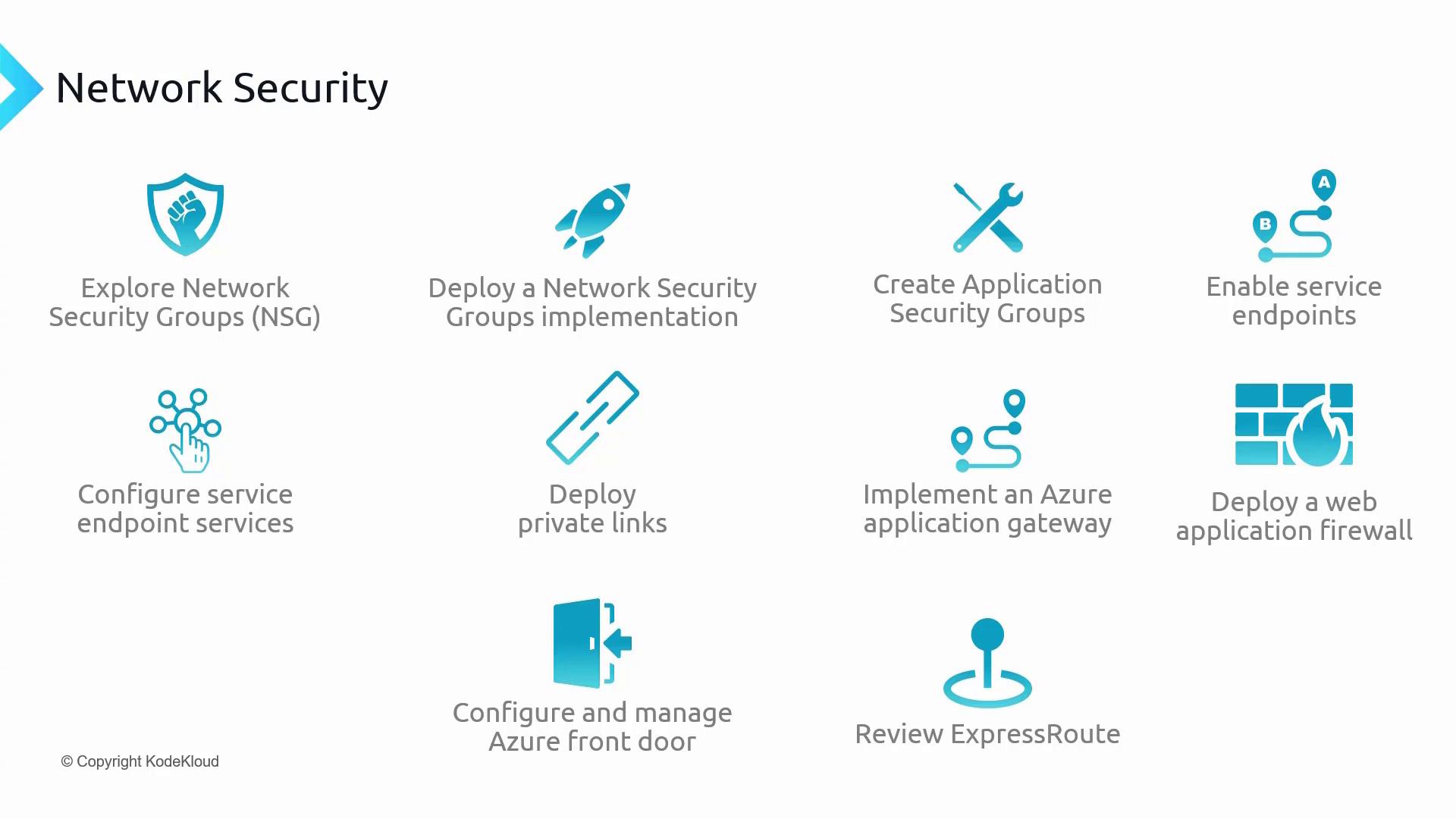Microsoft Azure Security Technologies (AZ-500)
Network Security
Introduction
Welcome back! In this lesson, we continue our comprehensive exploration of network security as part of the broader defense-in-depth strategy. Previously, we discussed how Microsoft manages physical security in their data centers, while Azure AD handles identity and access management—including conditional access, identity management, and multi-factor authentication.
In an earlier lesson, we examined perimeter security through DDoS protection, Azure Firewall, and the hub-spoke network strategy. Now, we shift our focus specifically to network security.
The key topics covered in this lesson include:
- Network Security Groups (NSGs)
- Application Security Groups (ASGs)
- Enabling and configuring service endpoints
- Deploying private links
- Implementing Azure Application Gateway
- Deploying a Web Application Firewall (WAF)
- Configuring and managing Azure Front Door
- Reviewing ExpressRoute
Key Insight
Even if you have a firewall in place, using Network Security Groups (NSGs) provides an additional layer of micro-segmentation at the virtual network level, ensuring granular control over network traffic.
Below is a diagram that summarizes the essential network security tasks, including deploying NSGs, creating application security groups, and configuring various Azure network services.

Let's begin by taking an in-depth look at Network Security Groups (NSGs).
Watch Video
Watch video content